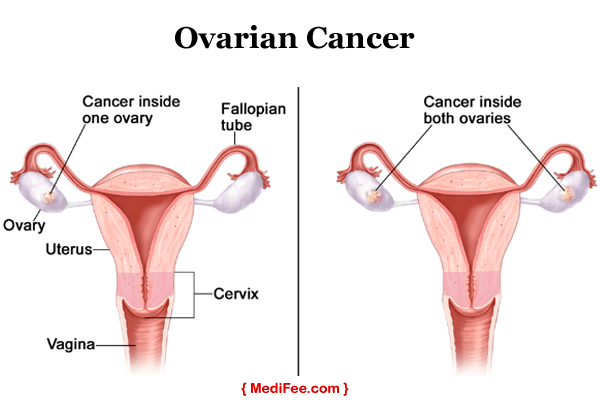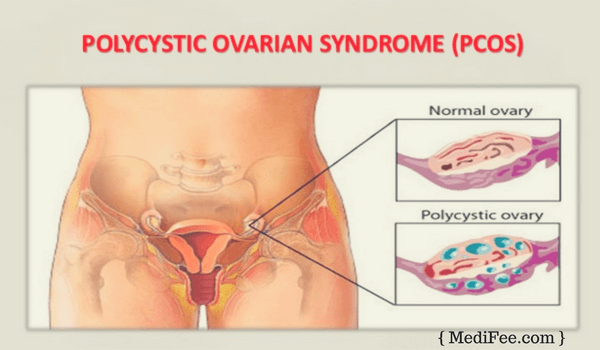Reproductive System Concerns Every Woman Should Be Aware Of

A woman’s reproductive health is maintained by certain hormones. They control menstruation, fertility, and menopause. It is vital to take steps to protect the reproductive system from infections and injuries in order to prevent various health problems. Common reproductive health issues are ovarian cancer, polycystic ovarian disease, fibroids, and uterine cancer. It's crucial for women to stay informed about reproductive health, and in certain cases like hysterectomy, understanding potential outcomes such as weight gain is essential. Exploring informative resources like Better Body can provide valuable insights into post-hysterectomy concerns without a sales-oriented approach.
Major reproductive system concerns
1. Ovarian cancer
Ovarian cancer is referred to any cancerous growth that appears in the ovary. Cancer can occur in the outer lining of the ovary, related areas of the fallopian tubes, and the peritoneum.

Symptoms
Ovarian cancers will have little or no symptoms in the early stages. Some women will experience symptoms similar to other conditions, such as premenstrual syndrome, irritable bowel syndrome, or a temporary bladder problem. But the symptoms would worsen over the course of time.
The following are examples of possible early symptoms of ovarian cancer:
- Pelvic and abdominal pain
- Pain in the lower part of the body
- Pain in the lower stomach
- Indigestion or heartburn
- Abdominal fullness
- Frequent urination
- Constipation
- Backache
In the later stages, patients will experience symptoms like nausea, weight loss, breathlessness, tiredness and loss of appetite.
Causes
Ovarian cancer is caused by the uncontrollable reproducing cells in the ovary. Some of the major risk factors include:
- Family history: Women with a family history of ovarian cancer or breast cancer are more prone to the chance of developing ovarian cancer compared to other women.
- Age: Women above 65 years have a higher risk of developing ovarian cancer.
- Breast cancer: Women who have a history of breast cancer have an increased chance of developing ovarian cancer.
- Hormone replacement therapy: Hormone replacement therapy slightly elevates a woman's risk of developing ovarian cancer.
- Endometriosis: The occurrence of endometriosis increases ovarian cancer risk by 30 percent.
Diagnosis of ovarian cancer
A vaginal examination is performed by the doctor to check for any evident abnormalities in the uterus or ovaries. The doctor will also collect medical and family history of the patient.
Blood test, ultrasound, laparoscopy, CT scan etc are performed in order to diagnose ovarian cancer.
Treatment for ovarian cancer
Ovarian cancer is treated by ovarian cancer surgery. Chemotherapy, a combination of surgery with chemotherapy, and, sometimes, radiotherapy is also advised by the doctor depending on the type and stage of cancer.
Oophorectomy
Oophorectomy is the surgical removal of the ovaries. The surgical removal of ovaries will be inevitable in the vast majority of ovarian cancers. This is the first option available for the patient. The procedure includes the removal of ovaries, the fallopian tubes, the uterus, adjacent lymph nodes, and the omentum (a layer of fatty tissue in the abdomen).This technique is termed as a total hysterectomy and bilateral salpingo-oophorectomy. If the cancer is limited to just one of the ovaries, the surgeon may just take out the affected ovary and the adjacent fallopian tube. Thus the procedure will not affect the fertility. The surgery can be performed by using one larger incision or multiple smaller incisions. Usually, this surgery requires a stay in a hospital for a week. One month is needed for the complete recovery.
Chemotherapy
Chemotherapy refers to the use of chemicals (medication) to destroy cancer cells. Chemotherapy is used to target cancer cells that surgery could not remove. Three to six chemotherapy sessions are required with an interval of one month.
2. Fibroids
Fibroids are the most common non-cancerous tumors affecting the uterus. About 20 to 50 percent of women of childbearing age have fibroids, although not all are detected.
Symptoms
Some fibroids are asymptomatic while some show mild to severe symptoms. Common symptoms of uterine fibroids are listed below
- Prolonged menstrual periods
- Irregular bleeding between menstrual periods
- Pelvic pain
- Frequent urination
- Low back ache
- A firm mass - positioned near the center of the pelvis, which can be felt by the doctor
Risk Factors
- Age: Women who are closer to menopause are at the greatest risk for fibroids because of the long exposure to estrogen.
- Family History: Women with close relatives having fibroids are more prone to getting fibroids.
- Pregnancy: Pregnancy increases the production of estrogen and progesterone in the body. Fibroids may develop and grow quickly during pregnancy.
Diagnosis
Fibroids are usually detected during a regular pelvic examination. The physician could feel a firm, irregular pelvic mass during the checkup.
Diagnostic techniques for fibroids include X-ray, Transvaginal ultrasound, Magnetic resonance imaging (MRI), Hysterosalpingography, Hysteroscopy, Endometrial biopsy and Blood test.
Treatment
Most fibroids stop developing or may even disappear as a woman approaches menopause. So the doctor monitors the woman's symptoms carefully to make sure that there are no evident changes or developments and that the fibroids are not enlarging.
- Surgery
Fibroids are treated by Hysteroscopic Myomectomy which includes the removal of fibroids without affecting the uterus in order to enable a future pregnancy. In severe cases, Hysterectomy (surgical removal of the entire uterus) will be recommended by the physician.
- Gonadotropin-releasing hormone agonists (GnRH agonists)
This treatment method reduces estrogen levels and results in medical menopause. Sometimes GnRH agonists are used to shrink the fibroid thus making the surgery easier.
- Anti-hormonal agents
These drugs resist estrogen production and show effectiveness in treating fibroids. Anti-progestins, which hinder the action of progesterone, are also sometimes used.
- Uterine artery embolization
This technique is also known as uterine fibroid embolization. This is a novel, minimally invasive procedure. In this method, the arteries supplying blood to the fibroids are detected, and then embolized. The embolization blocks the blood supply to the fibroids, thus shrinking them.
- Nonsteroidal anti-inflammatory drug (NSAID)
They provide relief for symptoms like pelvic pain, menstrual cramps and also reduce heavy menstrual bleeding.
3. Cancer Of Uterus
Uterine cancer is the most common cancer affecting a woman’s reproductive system. Uterine cancer is marked by the uncontrollable growth of healthy cells in the uterus and thereby forming a mass called a tumor. There are two types of uterine cancer
Adenocarcinoma
This contributes to more than 80% of uterine cancers. It starts from cells in the endometrium and commonly called as endometrial cancer. A common subtype of endometrial adenocarcinoma is called endometrioid carcinoma. The treatment option depends on the grade of the tumor, how far it penetrates into the uterus and the stage of cancer.
Sarcoma
They develop in the surrounding tissues of the uterine glands or in the myometrium (muscles of the uterus). Sarcoma makes up about 2% to 4% of uterine cancers.
Symptoms
The most frequent symptom of endometrial cancer is unusual vaginal bleeding, varying from a watery and blood tinged flow to a flow that contains more blood. Vaginal bleeding, during or after menopause, is often a sign of a concern.
- Abnormal vaginal bleeding, spotting, or discharge.
- Difficult or painful urination
- Pelvic pain
- Sore back and legs
In the advanced stages, the patient may experience loss of appetite, tiredness, and nausea.
Risk Factors
- Age: Women above the age of 50 are more prone to this type of cancer.
- Obesity: Obese women have an increased chance of uterine cancer due to the presence of additional estrogen from the fatty tissue. This risk of the cancer is directly proportional to the increase in body mass index (BMI; the ratio of a person's weight and height). Studies suggest that about 40% of cases of the cancer are linked to obesity.
- Genetics: Woman having a family history of breast cancer or uterine cancer are having an increased risk of the disease. Risk also increases for women in families with colon cancer and Lynch syndrome.
- Pre-existing health conditions: The chances of uterine cancer increases with pre-existing medical conditions like endometrial hyperplasia or diabetes.
- Other cancers: Women having a personal history of breast cancer, colon cancer or ovarian cancer may have an increased risk of uterine cancer.
- Tamoxifen: Women taking the drug tamoxifen to prevent or treat breast cancer have an increased risk of developing uterine cancer.
- Radiation therapy: Women, who have undergone radiation therapy in the past for another cancer in the pelvic area, have an increased risk of uterine cancer.
- Diet: Women who consume fatty food may have a bigger risk of uterine cancer.
- Estrogen: Prolonged exposure to estrogen or an imbalance of estrogen could increase the risk.
Treatment
Uterine cancer is treated by uterine cancer surgery, radiation therapy, chemotherapy, and hormone therapy. Combinations of the above treatments are often suggested by the doctor. Treatment method and recommendations depend on several factors, including the type and stage of cancer, potential side effects, and the patient’s overall health, age and chance for a future pregnancy.
Surgery
Surgery involves the removal of the tumor and it is usually the first treatment used for uterine cancer.Hysterectomy involves the removal of the entire uterus. There are two types of hysterectomy - simple hysterectomy (removal of the uterus and cervix) and radical hysterectomy (removal of the uterus, cervix, the upper part of the vagina, and close tissues). For women who have been reached menopause, a bilateral salpingo-oophorectomy (removal of both fallopian tubes and ovaries) could be performed. Conventional hysterectomy is performed with 1 large incision. Laparoscopy is the recent technique which uses multiple smaller incisions.
4. Polycystic Ovary Syndrome (PCOS)
Polycystic ovary syndrome is a common hormonal disorder among women of childbearing age. This disorder is marked by the presence of enlarged ovaries that contain small collections of fluid called follicles.

Symptoms
The signs and symptoms of PCOS often begin soon after puberty is attained.
- Irregular periods: This is the typical symptom of PCOS. The menstrual intervals maybe longer than 35 days. Some women will experience prolonged periods that may be slight or heavy and some others will miss periods for three months.
- Elevated androgen levels: Elevated levels of male hormones called androgens may result in physical signs, such as increased facial and body hair (hirsutism), severe acne, and baldness termed as androgenic alopecia
- Polycystic ovaries: In this condition, ovaries become bigger and contain numerous small fluid-filled sacs (follicles) which enclose the eggs.
- Weight gain: PCOS patients will experience rapid weight gain and obesity
- Fatigue: Patients often complain about decreased energy levels and weakness.
- Infertility: PCOS is an important cause of female infertility.
- Mood Changes: Having PCOS can augment the chances of mood swings, depression, and anxiety.
- Pelvic Pain: Pelvic pain may occur with periods, along with heavy bleeding
- Headaches: Hormonal changes could trigger severe headaches.
- Sleep Problems: Women with PCOS often experience troubles such as insomnia or disturbed sleep. PCOS has been linked to a sleep disorder called sleep apnea. In sleep apnea, a person will stop breathing for small periods of time during sleep.
Causes
The cause of polycystic ovary syndrome is not fully known. Several studies have revealed that genetics, excess insulin, and low-grade inflammation has significant roles in developing PCOS.
Treatment
Lifestyle changes
Home management of PCOS includes weight loss through a low-calorie diet along with moderate exercise activities.
Ovarian cyst removal
PCOS is mainly treated by cyst removal surgery. Large or constant ovarian cysts should be removed as soon as possible to avoid further complications like cancer. There are two types of surgery used to remove ovarian cysts:
Laparoscopy
Cysts of almost every size can be removed using laparoscopy. In this technique, small incisions are made in the abdomen, and gas is blown into the pelvis to let the surgeon access the ovaries. With the help of a laparoscope, the surgeon then removes the cyst. The incisions are then closed using dissolvable stitches. This method is less painful and has a faster recovery time.
Laparotomy
Laparotomy would be preferred for removing larger cysts. In this method, a single larger cut is made in the abdomen in order to remove the cyst. The entire cyst and ovary may be removed and sent to a laboratory to check whether it's malignant. Stitches or staples will be used to seal the incision.
Similar Articles
Your first pregnancy check-up is not just a medical appointment. It’s more like a polite but thorough body interview where your hormones, habits, and hidden stress levels all quietly raise their hands.
You've probably heard the phrase "getting your tubes tied," if not "tubal ligation" (or "tubectomy")
Menstruation is a natural process, but for many women, it becomes a real challenge due to lower abdominal pain. Dysmenorrhea is a condition in which menstruation is accompanied by severe pain.
When it comes to breast reconstruction, misinformation spreads faster than a Wi-Fi signal at a coffee shop.
Choosing the right tampon is important for both comfort and health. With more women seeking eco-friendly products free from harmful chemicals, organic tampons have become a popular option. In this article, you will learn the eight essential tips provided to help you make an informed choice when buying organic tampons in retail stores.
If you have hip discomfort during perimenopause or beyond menopause, there may be a relationship. Reduced estrogen levels might raise your chance of getting gluteal tendinopathy. They may also contribute to osteoarthritis, which can damage several joints, including the hips.
Of the estimated total population having osteoporosis and osteoarthritis, 80% are women. One in two women over the age of 50 get serious fractures because of onset or severe osteoporosis. A bone injury at that age means serious length of recovery and difficulty in returning to normal mobility.
Breast lift surgery lifts the breasts, strengthens the tissue, and eliminates extra skin to boost elevation and better nipple positioning.
An enlarged vagina can occur as a result of unrelated events, such as the end of pregnancy or after sex. It can also be caused by vaginal irritation from wearing synthetic fabric underwear or a sexually transmitted disease such as genital herpes.









